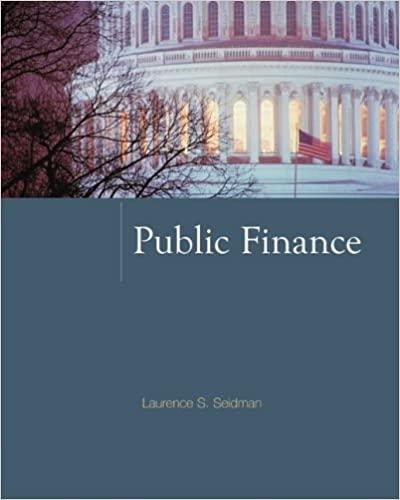Question
I need just a feedback to this particular discussion post below. Thanks 1. If you were able to put together a portfolio that completely eliminated
I need just a feedback to this particular discussion post below. Thanks
1. If you were able to put together a portfolio that completely eliminated all risk, what return would you expect to earn and why?
This question is a real eye opener, in that with great risk can come great reward. The asset classes I can think of to present to me a zero-risk situation in the portfolio would be the following: Savings account, CD certificate, bonds, treasuries, and ponds. I expect to get minimal and low return on investment. Obviously the higher the principle, the higher the return due to the small return times the higher principle. For example, in a savings account I would expect no more than 1% return. However, the feds are gradually increasing the overall interest rate which affects the savings account interest to increase slightly. A CD gives probably between 2%-6% return because the money is locked for certain time periods. Most reasons that the risk is low and return is low is because these asset types are government backed. If something happens to the bank or the economy the government will guarantee your balance.
2. Your grandfather has great faith in bonds and has heard about some high yield bonds that are available. He has asked you for your opinion. What advice will you give him?
I immediately would have if go after the bonds. I would advise him to go ahead and invest in the high yielded bonds. This is because, at my grandfathers age, it is not a good idea to invest in high risk asset classes. Its wise to follow the age vs stocks and bonds ratio. Its said that at age 30 a 70% stock investment and 30% bond investment would be great, mainly because at 30 you can profit from high returns and have time to your advantage. Looking at my grandfathers age, lets say 65, it is the opposite, 70% bond 30% stocks. This is because at age 65 you should start depending on the funds to retire, not willing to risk the money to a loss.
3. Explain how supply and demand influences the price of common stock.
Supply and demand of common stock can be easily explained. For a common stock transaction to happen, there has to be a buyer (demand) and a seller (Supply).
As the share price of a stock goes up the more supplied there are to sell (sellers). More willing to sell.
As the share price of a stock goes up the less demand (buyers) there are. Less willing to sell.
References
https://education.howthemarketworks.com/economics/supply-and-demand-examples-stock-market/
https://www.financialsamurai.com/the-proper-asset-allocation-of-stocks-and-bonds-by-age/
https://www.bankrate.com/finance/investing/low-risk-investments-with-modest-returns-1.aspx
Ehrhardt & Brigham (2017). Corporate Finance (6th Edition). South-Western
Step by Step Solution
There are 3 Steps involved in it
Step: 1

Get Instant Access to Expert-Tailored Solutions
See step-by-step solutions with expert insights and AI powered tools for academic success
Step: 2

Step: 3

Ace Your Homework with AI
Get the answers you need in no time with our AI-driven, step-by-step assistance
Get Started


